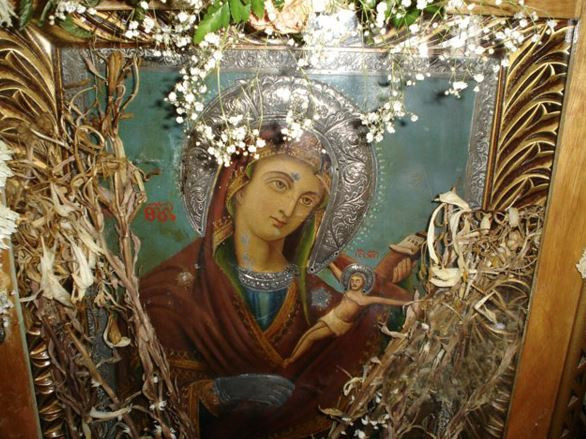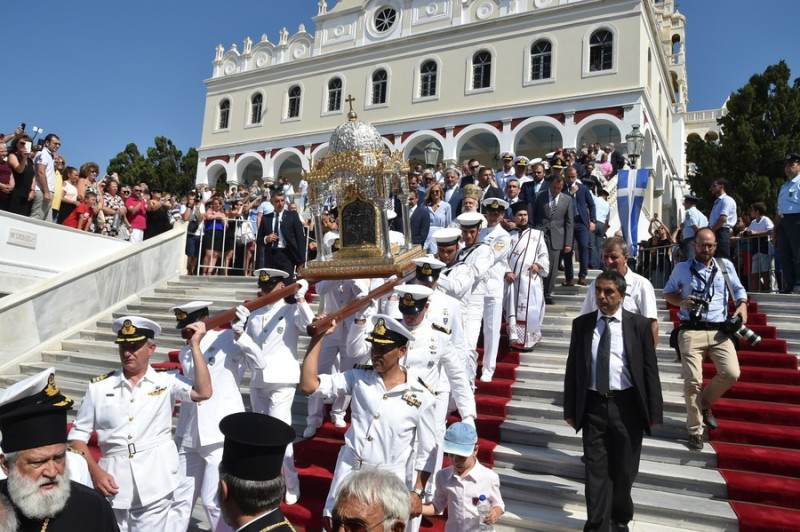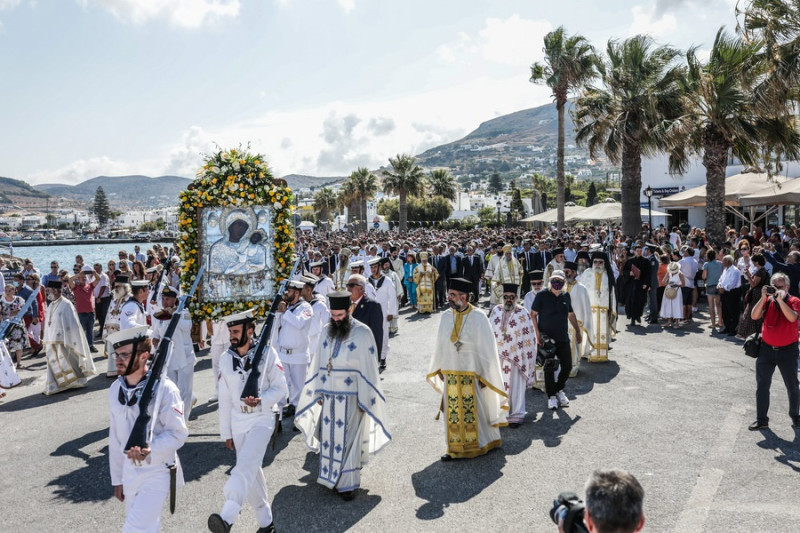Tomorrow is the culmination of the worship of the Virgin Mary, with numerous events and religious ceremonies in every corner of the country
The fifteenth of August is a day of religious celebration, which unites Greeks in a common spirit of worship and celebration.
The Virgin Mary is the most beloved and revered figure in Orthodoxy, and the Greeks have given her countless names that express their love and adoration, such as Glykofilousa, Eleousa, Pantanassa, and many others. There are countless temples and chapels dedicated to her Grace, and on August 15 the faithful flock to these pilgrimages to pay homage and seek her help.
Panagia Fidoussa of Kefalonia
One of the most famous temples on the island as it receives thousands of pilgrims every year, who want to pray to the Virgin Mary but to see up close the small snakes that appear every year at this time.
The snakes are small, harmless, with four small black specks in the shape of a cross on their heads. They appear from the 6th to the 16th of August on the rocks behind the Frankish bell tower of the church of Panagia Fidoussa and fearlessly creep between the world and inside the church.
According to tradition, pirates once threatened the monastery. After the monks’ prayers, snakes surrounded the monastery, removing the danger! This was the beginning of the miracles of Panagia Fidousa. The miracle has been repeated every year since then and is the explanation given by folk tradition for the appearance of snakes. It is even considered a bad sign if the snakes do not appear in a certain year, which, according to legend, did not happen in 1940 and 1953, the year of the devastating earthquakes for Kefalonia. The folk music tradition of Kefalonia even has a well-known couplet about Panagia Fidoussa: “The snakes from Markopoulo want to eat me, but these are of Panagia and they caress me”.
Our Lady of Grace:
In the small church of 1600 located on “Leipso”, as the Dodecanese call the largest island of the Leipso complex, they honor the Virgin Mary, nine days after her Ascension.
It is a Temple dedicated to “Our Lady of Grace” and was built by monks from Patmos. Why do the residents of Lipsi call the miraculous image that has remained intact over time? Because, rarely in Orthodox iconography, instead of holding the divine infant, the Virgin Mary holds the Crucified.
The Virgin Mary is said to hold Christ not as an infant, but dead on the Cross of martyrdom. And because the concepts dead and Grace are related, the icon, and the church in general, was called “Our Lady of Grace”.
Patmos: The custom of the epitaph
On the island of the Apocalypse, Patmos, where everything revolves around the historic monastery, its monks observe the custom of the epitaph of the Virgin Mary, a custom with Byzantine origins. The gold-plated epitaph of Panagia roams the streets of the island in a majestic procession, while the bells of the monastery and other churches ring non-stop. Every August 15th, fishermen take their boats out to sea and, accompanied by the icon from the Consolato area of Skala Patmos port, head to the bay of Panagia tou Geranos. The blessing of the grapes is at the end of Vespers and is followed by the treat of traditional products.
Famous celebrations:
The celebration of the Virgin Mary in Tinos is the best known in Greece, with the island being one of the most important pilgrimage destinations. The majestic procession of the miraculous image of the Virgin of Tinos is one of the most overwhelming moments of the celebration.
In Paros, Ekatontapiliani is a pole of attraction for thousands of believers, while in Soumela, the Monastery which is a religious symbol of the Pontians, also gathers a large number of pilgrims, who reverently participate in the religious ceremonies.
Festivals and traditional feasts:
The celebration of the Fifteenth of August is accompanied by traditional feasts and dances in many regions of Greece. In Zagorochoria, the three-day events with continental purposes, in Thassos the festive table after the procession of the icon, and in Lesbos the festival in Agiaso are some examples of the rich festive traditions that accompany this important religious holiday.
Source: Skai
I have worked as a journalist for over 10 years, and my work has been featured on many different news websites. I am also an author, and my work has been published in several books. I specialize in opinion writing, and I often write about current events and controversial topics. I am a very well-rounded writer, and I have a lot of experience in different areas of journalism. I am a very hard worker, and I am always willing to put in the extra effort to get the job done.













